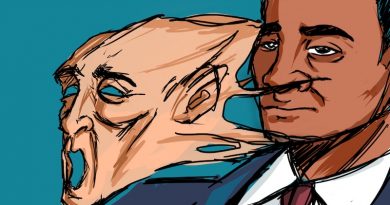The Problem with the 2015 U.S. Open
The Men’s U.S. Open is a sporting event I have never cared much about. When I was a little girl, U.S. Open time was the worst time of year to spend at my grandmother’s house. See, my grandfather loves golf so much, he watches the entirety of the U.S. Open on television. If you’ve ever watched golf on television, you know exactly what I’m talking about (unless you are my grandfather, or someone else’s golf-loving grandfather). Despite my incredible lack of interest in the U.S. Open, the event has managed to push its way into my life.
This year, the U.S. Open will be held at the Chamber’s Bay Golf Course in University Place, Washington. That’s right! Not even twenty minutes from the UW Tacoma campus, golfers, journalists, golf fanatics, news stations, and others from around the U.S. will flock to University Place.
Generally, when a large sporting event invades a city, there is a net positive effect on local commerce. More people visiting means more money changing hands for food, lodging, entertainment, transport, and shopping. The Olympics or the World Cup are much larger examples of how sporting events create commerce in a city (and often a much wider area).
The U.S. Open is smaller, but no different. I would argue that these types of sporting events include some negative unintended consequences. The News Tribune reported that the championship would bring in some $4 million of revenue to Pierce County because Chambers Bay is county owned. However, the county will have the added expense of providing security among other things that will virtually erase the revenue stream. The News Tribune also reported that the estimated economic windfall due to the increase in commerce might be around $140 million. This considerable influx will certainly benefit the residents of University Place and the South Sound in the short term, but there are other things to consider.
Traffic congestion will certainly be an issue. Traffic in and around Tacoma is often difficult during peak hours with only the normal amount of residents and commuters present. Think about the thousands of extra people commuting to and from Chambers Bay and how inconvenient that might make the morning, afternoon, evening, or anytime commute.
In addition, the increased amount of travelers will surely create a higher demand for lodging. Homeowners in University Place have listed their properties for up to $30,000 for the week of the U.S. Open. The lodging search has even extended as far as Olympia. Since organizers are expecting around 31,000 people to watch the championship each of the four days, many hotels in Thurston County are already sold out.
But I know what you’re thinking. This all sounds ridiculously positive right? Where is the down side? My main issue with the U.S. Open is in the access that minority and marginalized populations have to the game.
Golf has historically been a game for the wealthy, and that often means white. Even after the success of Tiger Woods, golf still manages to maintain a majority of white athletes. This probably has something to do with both the cost of the game and the exclusive nature of many golf courses and clubs. In high school, I golfed for about two weeks. I had to wear course appropriate attire and I needed clubs, which were outrageously expensive. Luckily my grandfather had a short set I borrowed. But the pretentiousness of needing a collar on the course and being sure that I wore a visor, not a brimmed hat seemed ridiculous in the 21st century.
Perhaps my issues with the U.S. Open stem not from the potentially annoying pitfalls of having thousands of visitors to the South Sound. Rather, I would like to think that this country has moved past supporting sports events that are largely exclusionary and whitewashed. Instead, it would be incredible if there were more golfers that reflect the multicultural and multiracial diversity present in the United States today. That would be a sports event I could get behind.







